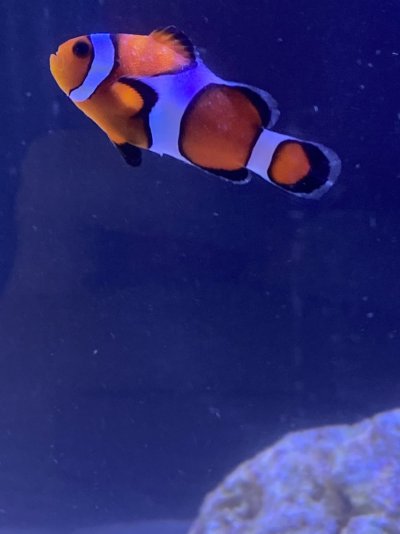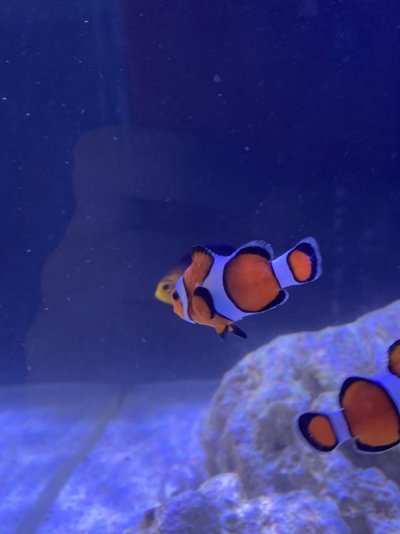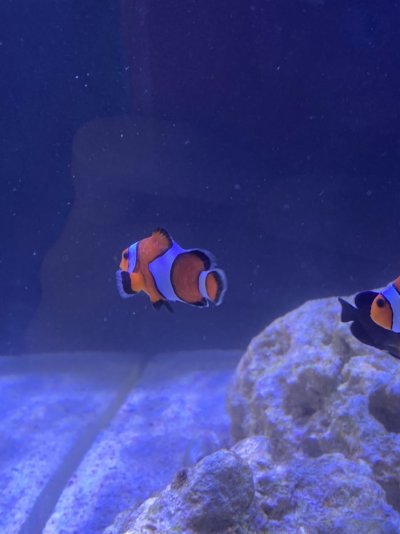Last week, I posted a thread asking for help with a splotchy white discoloration on one of my clowns. Here’s the link to the thread: https://www.reef2reef.com/threads/s...n-clownfish-otherwise-acting-normally.936085/
The prevailing opinion seemed to be that it was brook. I didn’t have time to set up a QT tank last week, so instead I began feeding all my fish reef frenzy medicated with metroplex. However, it’s been almost a week since the discoloration appeared and I’m starting to think that it isn’t brook. For one, the affected clown has been acting normally since I noticed the discoloration and has been eating well and breathing normally. Additionally, none of the other fish in the tank, including the other clown, have developed discoloration, and they are also acting completely fine. From what I know about brook, it’s a fast killer, so this isn’t what I’d expect to see.
Does anyone have any idea what this might be? The patches don’t really look like ich, and almost have a pale translucent quality. Perhaps some sort of external parasite? I’ll post some more pictures from today below, but it’s appearance hasn’t really changed since last week, so you can also check out my previous thread for more pictures.






The prevailing opinion seemed to be that it was brook. I didn’t have time to set up a QT tank last week, so instead I began feeding all my fish reef frenzy medicated with metroplex. However, it’s been almost a week since the discoloration appeared and I’m starting to think that it isn’t brook. For one, the affected clown has been acting normally since I noticed the discoloration and has been eating well and breathing normally. Additionally, none of the other fish in the tank, including the other clown, have developed discoloration, and they are also acting completely fine. From what I know about brook, it’s a fast killer, so this isn’t what I’d expect to see.
Does anyone have any idea what this might be? The patches don’t really look like ich, and almost have a pale translucent quality. Perhaps some sort of external parasite? I’ll post some more pictures from today below, but it’s appearance hasn’t really changed since last week, so you can also check out my previous thread for more pictures.





















